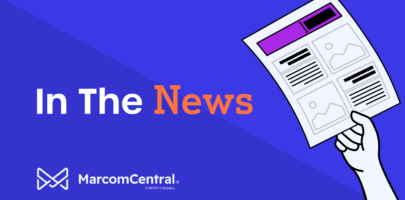Get news, updates, and insights delivered straight to your inbox.
Retailers Should Embrace Brand Asset Organization for Marketing Success

By: Total Retail Magazine Date: June 26, 2020
“The peak holiday retail sales period is make-or-break for most retailers. This year more than ever before, the 2020 holiday season will be even more crucial as retailers attempt to recoup their Q1 losses due to store closures related to COVID-19. In the coming months, planning for this year’s holiday season will go into overdrive with an emphasis placed upon marketing teams that will be competing for precious customer loyalty and a share of their wallet.
A brand manager’s laptop is often messy, housing a plethora of brand assets and marketing materials with little organization. We’ve all seen marketing teams use shared drives to house their marketing assets, then neglect the upkeep of these drives. This can lead to producing different versions of the same thing, and as a result, finding branded templates or other pieces of the most current marketing collateral can be a huge headache.
In retail, more than any other industry, consumers are used to getting what they want, when they want it. According to one survey, 47 percent of shoppers will start looking elsewhere if the product they need is unavailable. This is why brand managers need to move as quickly as the market changes, producing the right content to get in front of consumers as soon as possible. An easy strategy to facilitate getting your content to market faster is with vigorous organization.
There are several steps you can take to ensure that your collateral can be found quickly and easily. As retailers globally start to re-open in the wake of the coronavirus pandemic, and consumers begin to shop in-store again, brand asset organization will be a huge help for team members.
Tip No. 1: Centralize and Localize Brand Assets
Especially in the case of global retail brands, the same asset may be used across multiple geographies, and adapted for local languages and market conditions. As retailers scale larger and more global, it becomes increasingly impossible for brand teams to manage this entire process centrally. If the brand has regional teams managing their own local marketing, it’s important to ensure all teams can easily access what they need and use them. Take for example Uniqlo, a prominent Japanese retail brand that also has stores in the U.S. How can Uniqlo ensure local markets, like stores in the U.S, have the right assets for each season and are able to customize them for local needs? The answer is for Uniqlo to centralize all content utilizing digital asset management (DAM) software.
As noted above, many retailers use shared drives to house their marketing assets. However, storing marketing collateral on multiple drives for multiple regions can make finding and localizing a specific piece of content a real burden, especially when it’s important to act quickly. Unlike a shared drive, a DAM tool does more than just house assets — it helps global marketing teams leverage content in various markets while upholding overarching brand guidelines. The DAM tool will act as a central repository for branded collateral materials, and help enforce brand guidelines with universal updates, effectively managing outdated images, trademarks, logos and disclaimers.
Managing marketing collateral doesn’t begin at a campaign launch, however; it begins months in advance during the planning stages. Before retailers begin to design, organize and distribute assets globally, they should first consider what collateral each region is prioritizing that season. What trends and products will be promoted during the summer months vs. the winter months? What will be successful in the U.S. in June will differ from Singapore. Localization efforts can be time consuming and costly. Without gaining an understanding of a local market in advance, these efforts could easily be squandered. With so many different marketing channels and various assets used seasonally, it can be challenging to keep global brand consistency top-of-mind. Utilizing a DAM tool can help with just that. With the help of a DAM solution, retailers have access to brand guidelines via a custom user profile to effectively manage campaigns, ensuring brand-compliant messages across markets.
Tip No. 2: Showcase Priority Inventory by Keeping Assets Current
While centralizing your assets is a crucial step in your marketing collateral strategy, keeping these assets up-to-date is equally imperative, especially in a time when messaging and inventory availability is constantly changing. Make it a point to regularly audit and categorize all marketing assets. Ensure that all assets are being used (or have a purpose), and get rid of the ones that are redundant, not useful or not compliant with legal regulations or brand identity. Old or duplicate versions of content can lead to confusion and inconsistency with regard to which brand materials are being used, which can ultimately deteriorate brand equity. By identifying and eliminating these, you significantly lower your risk of incorrectly branded materials being used for marketing campaigns while protecting brand consistency.
Tip No. 3: Make the Most of Assets to Work Year-Round
It’s important to adapt and repurpose materials across a range of content and media to ensure you’re getting the most bang for your buck. This will also support an integrated, cross-channel strategy in the process, which is proving so important for retailers, especially during this global pandemic.
Repurposing content is a useful and strategic tool that enables brand consistency and is a time-saver for organizations. Creating good content from scratch on a regular basis is a herculean task. Chances are, you probably already have assets that could be repurposed in new ways. Utilizing a DAM solution that allows for selective customization can give companies the ability to quickly edit existing content with fields of text or create custom marketing assets thanks to dynamic templates.
Ultimately, it’s about understanding the many ways your customers consume content and finding ways to create a piece that has lots of legs. For example, a longer seasonal trends video made for YouTube can be edited down into shorter, snackable videos that can be shared across Instagram, e-newsletters, and other channels. By repurposing the video, you’re enabling the content to live for a longer amount of time, stretching it across various platforms, and increasing the likelihood customers will see it. Identify best-performing assets and adapt them so they can live on multiple platforms and touchpoints. Conversely, it’s equally important to identify pieces of content that are not performing to company standards and get rid of them, or at least repackage them in a way that will resonate with your audience.
Knowing that Q3 will be a critical quarter for retailers as COVID-19 lockdowns begin to lift, it’s crucial retailers plan for their comebacks now. As consumers begin to return to stores, marketers must be prepared. With a DAM tool incorporated into your brand’s global marketing strategy, global teams will be better equipped to quickly locate various assets, be able to easily localize content while still adhering to brand guidelines, and get content in front of your audience to drive sales.
Byung Choi is CEO at MarcomCentral, a cloud-based marketing technology company.”
Read the article in full here.


